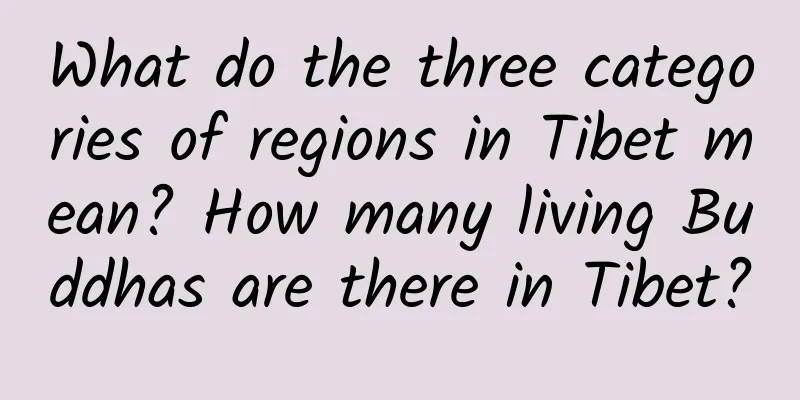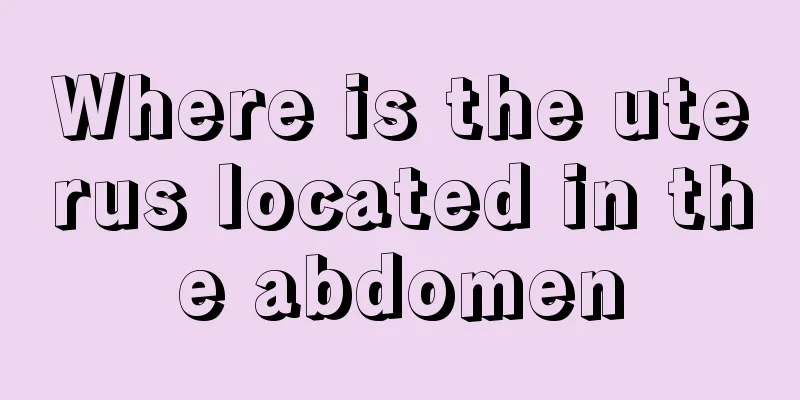What do the three categories of regions in Tibet mean? How many living Buddhas are there in Tibet?

|
Tibet is mysterious, a plateau, a Tibet, a frontier. Eight hundred mountains and rivers, eight hundred prayer flags, eight hundred Sanskrit chants. Three thousand lamas, three thousand khatas, three thousand girls. I have been there, but there is no faith I want there. Where should I go? I always feel that the dream is right beside me, it is out of reach, it is safe and healthy. In just a moment, the world has changed, just because he caught her eyes, he saw her, his messy heart was full of flowers, she looked at him, her gradually withered heart flowers suddenly reappeared in the fall of the gorgeous style. So what does the three types of areas in Tibet mean? How many living Buddhas are there in Tibet? Let's take a look at the introduction of Encyclopedia Knowledge Network below! Contents of this article 1. What do the three types of regions in Tibet mean? 2. How many living Buddhas are there in Tibet? 3. Where are the pilgrimage sites in Tibet? 1What do the three types of regions in Tibet mean?The method of dividing Tibet is based on the altitude of the region, with 4,000 meters as the benchmark and 4,000 to 4,500 meters as the three categories. Tibet is located in the southwest of the Qinghai-Tibet Plateau in China, between 26°50′ and 36°53′ north latitude and 78°25′ and 99°06′ east longitude. It borders Xinjiang Uygur Autonomous Region to the north, Sichuan Province to the east, Qinghai Province to the northeast, Yunnan Province to the southeast, Myanmar, India, Bhutan, Nepal and other countries to the south, and Kashmir to the west. The land border is more than 4,000 kilometers long, with the widest north-south width of more than 900 kilometers and the longest east-west width of more than 2,000 kilometers. It is an important gateway to China's southwestern border and has no access to the sea. 2How many living Buddhas are there in Tibet?There are currently more than 1,700 religious sites, more than 46,000 monks, and more than 400 living Buddhas in Tibet. The Dalai Lama and the Panchen Lama were both created through the reincarnation system. They are both the legal leaders of the Gelugpa sect of Tibetan Buddhism. In religion, he is equal to the Karmapa and the Dharma King Phuntsok. In politics, the Dalai Lama has a greater influence. The Karmapa and the Dharma King Jigme Phuntsok are leaders of two different sects of Tibetan Buddhism. The Dharma King Jigme Phuntsok was designated as the Dharma King by his master because of his achievement in practicing the Great Perfection (the most difficult secret method of Tibetan Buddhism). The Karmapa was created through the reincarnation system. After 1949, the only two great living Buddhas created through the reincarnation system in Tibet are the 17th Karmapa and the 11th Panchen Erdeni. 3Where are the pilgrimage places in Tibet?Located in the center of the old city of Lhasa, it has a history of 1,350 years. It is the most glorious Tubo-era building in Tibet and the earliest civil engineering structure in Tibet. It also pioneered the Tibetan-style temple city bureau. After many renovations and expansions, it has now formed a magnificent scale of more than 25,100 square meters. There are more than 20 halls. The main hall is 4 stories high, with a gilded copper tile roof. It is magnificent and has the architectural style of the Tang Dynasty, and also absorbs the architectural art characteristics of Nepal and India. In the center of the hall is a life-size gilded bronze statue of Sakyamuni at the age of 12 brought by Princess Wencheng from Chang'an. The side halls on both sides are dedicated to statues of Songtsen Gampo, Princess Wencheng, and Princess Bhrikuti of Nepal. Jokhang Temple is not only a temple that houses many Buddha statues and holy objects for believers to worship, but also a three-dimensional and true representation of the Tantric doctrine of the ideal model of the universe in Buddhism - the altar city (mandala). In front of the main entrance of Jokhang Temple, there are three stone pillars. On one of the stone pillars is engraved the Tang-Tibetan alliance signed in 823 AD in both Chinese and Tibetan. |
<<: What equipment should I bring to Tibet in winter? What are the special snacks in Tibet?
Recommend
False sharpness will increase
Genital warts are a contagious disease. Correspon...
What is the normal body temperature after cesarean section?
Caesarean section is also a minor operation for w...
What are the four major symptoms of advanced pelvic cancer?
When pelvic cancer reaches the late stage, the sy...
General treatment for uterine prolapse
Women who have experienced uterine prolapse befor...
Cardiovascular disease prevention strategies and challenges
At present, cardiovascular disease is the leading...
The harm of not taking folic acid tablets during pregnancy
In fact, many pregnant women will take folic acid...
When is the best time to use medication to induce abortion?
Because abortion itself is a great harm to women,...
Can pregnant women eat donkey-hide gelatin and brown sugar?
Donkey-hide gelatin and brown sugar are very comm...
Postpartum breast care, don't do this
For female friends, postpartum breast care is ext...
Can pregnant women wear Xiaomi bracelets?
The Xiaomi wristband can record running and hikin...
Vitamin D deficiency can also cause insomnia? This is true, vitamin D supplementation needs to be done like this
The public is familiar with vitamin D. Vitamin D ...
Don't tell three lies to your doctor
Due to the influence of various social pressures,...
Can I drink ginger juice and brown sugar during menstruation?
Menstruation is a special period for women. Durin...
What are all the plots about Guan Yu in Romance of the Three Kingdoms? How did Guan Yu die in Romance of the Three Kingdoms?
The Romance of the Three Kingdoms uses characters...
Can I eat dried mushrooms during menstruation?
Health care during menstruation is very important...









